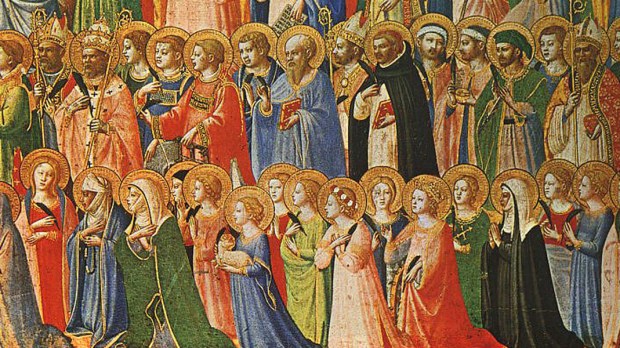It’s said that saints come in clusters, but I’ve never seen such a holy rabbit hole as the family you’re about to meet. Three generations of saints with saint teachers and saint friends—this crew will challenge you to form holy relationships like none other.
St. Basil the Great was a bishop, a Doctor of the Church, and a Church Father. His brother St. Gregory of Nyssa was a bishop and a Church Father. Their brother St. Peter of Sebaste was a bishop. Their brother St. Naucratios was a hermit. Their sister St. Macrina the younger was a nun and a foundress while their other sister St. Theosebia was a deaconess.
Where does a family like this come from? From holy parents and grandparents, of course. St Basil the Elder, his wife St. Emilia, Basil’s mother St. Macrina the Elder, and Emilia’s martyred father.
St. Macrina the Elder was born in Asia Minor and instructed by St. Gregory Thaumaturgus (“the Wonder Worker”). When he arrived in Macrina’s hometown there were only 17 Christians; at his death, there were only 17 pagans. His witness transformed St. Macrina, who, along with her husband and children, fled to the forest to live during the Diocletian persecutions. For seven years, they survived by hunting and foraging, glad to suffer for Christ.
One of those children was St. Basil the Elder, a man whose virtue, it’s said, was exceeded only by that of his Doctor-of-the-Church son St. Basil the Great. Basil the Elder was a teacher of rhetoric, well-respected for his wisdom, and married to Emilia. The two had 10 children, six saints and four whose names are unknown.
Basil the Elder died fairly young, so Emilia and the children moved to the estate of Macrina the Elder, whose strong faith had a profound impact on the family. St. Basil the Great in particular credited his grandmother for the piety and Christian wisdom he learned as a child.
Meanwhile, St. Emilia was the daughter of a martyr and would eventually be known as the “mother of saints.” Emilia struggled with the temptation of many mothers to idolize their children, though. It took the wisdom of her daughter, Macrina the younger, to lead her to the trust in God that would make her a great saint. This was most evident when one of her sons, the hermit St. Naucratius, died at age 27. Emilia was understandably heartbroken, but her daughter pointed out, “it is not right for a Christian to mourn as one who has no hope.” Emilia fixed her eyes on Christ once more and carried on.
As holy a woman as St. Emilia was, it seems that it was her oldest child, St. Macrina the Younger, who was the head of the family for much of her life. Promised in marriage to a man who died before their wedding, Macrina made a vow of chastity and encouraged many of her siblings to do the same. At Macrina’s prompting, Emilia started a community of nuns on the family’s property, many of whom were former slaves. Her witness of chastity spoke volumes to her siblings, particularly her most famous brothers.
St. Basil the Great and St. Gregory of Nyssa are the most well-known of the family, both of them bishops and Church Fathers. While Basil is considered the founder of monasticism in the East, Gregory seems to have been married, at least for a short time before the death of his wife. Both had such great respect for their eldest sister that Gregory went so far as to write a dialogue in which he cast her as his teacher—a shocking thing for a bishop to say of a woman at the time. It was Macrina whose disapproval of his worldly life convinced Basil to dedicate himself to the service of Christ and his Church. Together with Basil’s dearest friend, St. Gregory Nazianzen, they are called the Cappadocian Fathers and stood powerfully against the Arian heresy.
St. Theosebia was a virgin and a deaconess, which was a role of service (not sacramental ministry) in the Church, and spent her life feeding the hungry, caring for orphans, and instructing women for Baptism. St. Peter of Sebaste too seems to stand in the shadows his more famous brothers cast, but this youngest child was a bishop and a great help to Emilia and Macrina the Younger in their religious community. Though he wrote nothing, he encouraged his brothers to do so and several of their works were written at his prompting.
The most important thing we can learn from this family is that holiness is possible. It doesn’t take martyrdom or virginity or even an immaculate life. All it takes is people longing to live for Jesus and encouraging each other on the way, parents teaching children and children teaching parents. On May 30, the Feast of St. Macrina the Elder, St. Basil the Great, and St. Emilia, let’s pray that God would make our families holy, every last one of us.

